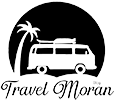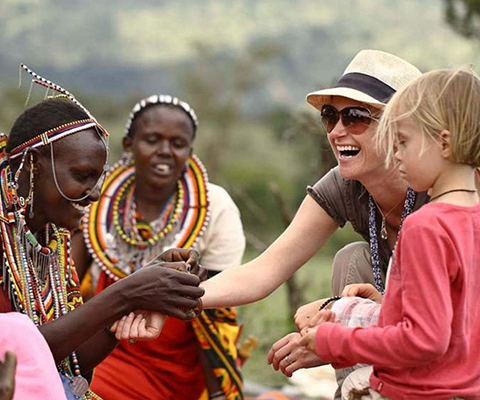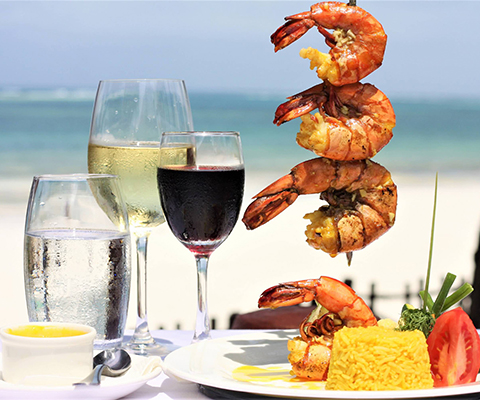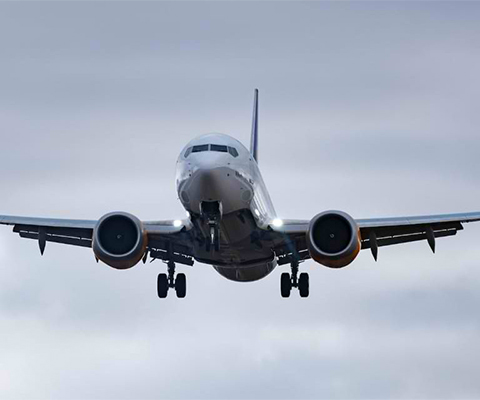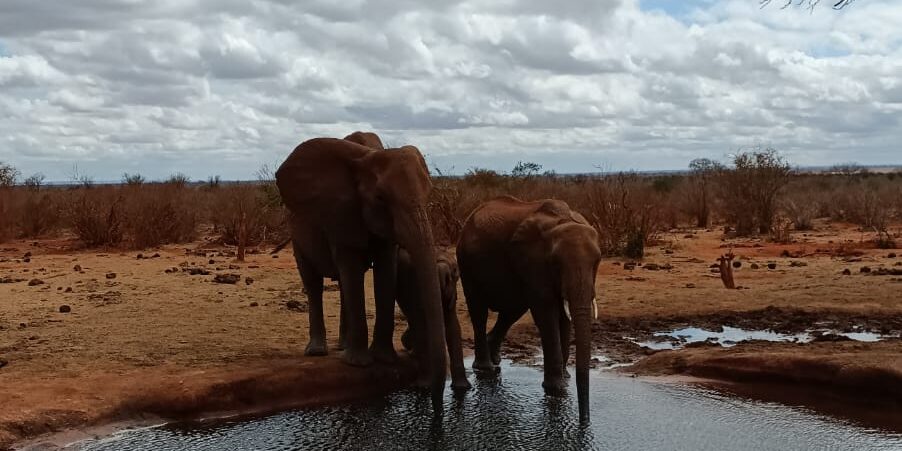Discover the best African safari parks, where nature’s most awe-inspiring spectacles unfold.
Africa is a continent that captivates the imagination with its untamed wilderness and the lure of the unknown.
It is a land where the sun rises over sweeping savannas. Where ancient cultures and traditions intertwine with the rhythms of the animal kingdom. And where each step taken reveals a world that exists far beyond our daily lives.
The anticipation of encountering majestic creatures in their natural habitat stirs the hearts of adventurers and nature enthusiasts alike. And the best safaris in Africa offer an unparalleled opportunity to witness this magic firsthand.
The African continent presents a staggering array of options for choosing the perfect safari destination. From the iconic plains of the Serengeti in Tanzania to the lush Okavango Delta in Botswana and from the sprawling Maasai Mara in Kenya to the remote corners of South Africa’s Kruger National Park, the choices are as diverse as the continent itself.
Each destination offers a unique blend of landscapes, wildlife, and experiences, ensuring every traveler can find their slice of paradise.
This article highlights 14 of the best safaris in Africa, showcasing the remarkable beauty and biodiversity of the continent. It will also list tips to help you narrow your options to one that suits your preferences. If you’re trying to pull your African safari on a budget, then you should also read this guide on how to get an affordable African safari.
The Best African Safari Parks and Destinations
Maasai Mara National Park – Kenya
You’d say I am biased because I am Kenyan, but really, Maasai Mara kicks off our list of the best safaris in Africa. The reason is that Maasai Mara is home to one of the seven wonders of the natural world – The Great Migration. Every year, more than 1.5 million wildebeest, along with giraffes and zebras, migrate in an enormous loop in search of greener pastures. Their migration route crosses many rivers, most filled with giant Nile crocodiles. It is a spectacle and is dubbed one of the greatest wildlife shows on earth.
Maasai Mara Tour highlights:
- Witness the Great Migration of over 1.5 million wildebeest, along with zebras and antelope
- Enjoy day and night game drives
- Large concentrations of giraffe, buffalo, and elephant
- Incredible big cat sightings – leopard, lion and cheetah
- Rich resident wildlife, diverse landscapes, temperate climate, and wide-open spaces
- Selection of Africa’s best lodges with access to river crossing points
- Bird’s eye view of herds on a hot-air balloon safari
- Nature walks and mountain bike experiences
- Meet Maasai people and experience their culture
- Stay in a private conservancy for a crowd-free game viewing
Kenya Safari Cost
| 4-star comfort | 4-star luxury | 5-star luxury | |||
| Low | High | Low | High | Low | High |
| $420–500 | $550–650 | $650–750 | $800–1050 | $1,100–1,250 | $1,300–1,750 |
When to Go
The best time to visit Maasai Mara depends on what you want to see or do. Remember, the park’s abundance of wildlife and wide open landscape makes it a perfect year-round safari destination. But if you’re solely interested in experiencing the great migration, the best time is between August and November. Maasai Mara Safari’s high/peak season is from June to October, while the low/green season is between November and March.
Serengeti National Park – Tanzania
When it comes to the Great Wildebeest migration, you can’t speak about Maasai Mara without mentioning the Serengeti National Park. The reason is that the herd rotates clockwise around the Mara-Serengeti ecosystem. So, in many cases, your safari will be tied between these two countries, which is an excellent opportunity to kill two birds with one stone.
Serengeti National Park and Maasai Mara share the same border: Serengeti starts at the border of northern Tanzania and Mara at southwestern border of Kenya. The two parks boast a savannah landscape, making wildlife visibility very high.
Serengeti Tour Highlights
- Witness the bulk of the great wildebeest migration
- Experience a hot-air balloon safari
- Watch the sunrise unfold across the boundless plains
- Catch the bittersweet predator action during the calving season (Feb and March)
- Excellent year-round viewing
- Safari options for different travelers – including wildlife enthusiasts, romantic/private groups, adventure safari, and family-friendly lodges
- Grumeti River crossings
- Perfect for observing the big 5 – though rhino sighting is rare
Where to Go
The vast plains of the Serengeti comprise 1.5 million ha of savanna. It is divided into four different parts, namely:
- Northern Serengeti: Most remote corner of the park less crowded and features green rolling hills, small rivers, and lush granite outcrops. It’s a perfect spot to hop on a hot-air balloon safari for an aerial view of wildebeests, giraffes, and elephants. Catch the dramatic Mara River crossing between July and August.
- Southern Serengeti: Most accessible part of Serengeti and busy during peak season between June and October. Close to Ngorongoro Conservation Area, which houses Ngorongoro Crater. The crater gives some of the easiest and most rewarding Big 5 viewings in East Africa.
- Central Serengeti: The central part of the park has several lodges and camps providing easy access to migration hotspots. It’s home to Seronera River Valley, which divides the wooded hills of the north and grassy plains of the south, creating a haven for the game from both habitats. Busy during peak months of June to October.
- Western Serengeti: The savannah stretches to Lake Victoria, the largest freshwater lake in Africa. It’s home to the Grumeti River, which has hippos and Nile crocodiles. Each year from May to July, hundreds of thousands of wildebeest make their way to the banks of Grumeti to embark on the dramatic river crossing. It is one of the most thrilling sights, yet a bittersweet experience because hungry crocodiles kill many herbivores.
- Eastern Serengeti: Quiet and less crowded, but with diverse wildlife. It’s perfect for spotting the big cats, particularly cheetahs, and lions, posing at the top of the kopjes scenes. Eastern Serengeti visits peak around February and March, the calving season.
Tanzania Safari Costs
| 4-star comfort | 4-star luxury | 5-star luxury | |||
| Low | High | Low | High | Low | High |
| $500–675 | $550–725 | $800–1,200 | $950–1,350 | $1,250 | $,850 |
When to Go
The best time to visit the Serengeti depends on your interests and priorities. If witnessing the wildebeest migration is at the top of your list, plan your visit around July to October. For optimal game viewing, consider visiting during the dry season from January to March or July to October. If you prefer fewer crowds and are interested in capturing lush green landscapes and unique photography opportunities, the green season from November to December or April to May might be ideal.
Ngorongoro Crater National Park, Tanzania
The Ngorongoro Crater is a breathtaking natural wonder in Tanzania, East Africa. It is often called the “eighth wonder of the world” due to its beauty and ecological significance. The crater is situated within the larger Ngorongoro Conservation Area, a UNESCO World Heritage Site that covers approximately 8,292 square kilometers (3,200 square miles).
Formed about 2.5 million years ago by a volcanic eruption, the Ngorongoro Crater is the world’s largest inactive, intact volcanic caldera. The caldera spans a diameter of about 16 to 19 kilometers (10 to 12 miles) and has a depth of over 610 meters (2,000 feet), making it one of the largest and deepest calderas on Earth. The crater’s walls rise steeply, creating a natural enclosure for diverse wildlife. According to experts, the volcano would have stood higher than Mt. Kilimanjaro and would have been the highest peak in Africa.
The Ngorongoro Crater is famous for its incredible biodiversity, hence the name Africa’s Eden. It supports various ecosystems, including grasslands, forests, swamps, and lakes. The diverse habitats provide a home to an extraordinary concentration of wildlife species. And since it’s relatively confined, it’s easier to view wildlife and witness the circle of life unfolding before your eyes.
Within the crater, you can witness the Big Five game animals and other wildlife like zebras, wildebeests, cheetahs, hyenas, hippos, and an abundant bird population. The presence of such a rich and diverse animal population makes Ngorongoro Crater one of the best safari destinations for wildlife enthusiasts and photographers.
The Ngorongoro Crater offers stunning panoramic views that are nothing short of awe-inspiring. You can enjoy the breathtaking vistas of the crater floor, dotted with grasslands, acacia forests, and shimmering lakes. The contrasting landscapes and the crater walls’ backdrop create a truly captivating and picturesque setting.
Ngorongoro Crater Highlights
- Interact with the Maasai people, who have maintained their traditional way of life
- Experience the Big 5
- Visit last Tanzania’s bushmen
- Explore the vast crater and surrounding area on a hot air balloon
- Hike to the summit of the Gol Mountains
- Visit Olduvai Gorge – famously known as the Cradle of Mankind
- Visit the 6-kilometer-wide and 85 meters deep Empakaai Crater, which is the smaller sibling of Ngorongoro Crater
- Enjoy the views of wading birds at Lake Magadi
- Explore Lerai Fever Tree Forest
- Visit the Serengeti and other parks in the Northern Circuit
- Nature and crater view walks
Kruger National Park – South Africa
Kruger National Park is a world-renowned wildlife sanctuary located in northeastern South Africa. It is one of Africa’s largest and most famous national parks, attracting visitors from all over the globe. The park is a treasure trove of biodiversity, home to a remarkable array of wildlife, stunning landscapes, and a rich cultural heritage. It offers a convenient escape into the wild, where visitors can experience the awe-inspiring beauty of African wildlife, including the Big 5.
Exploring Kruger National Park is an adventure like no other. You can embark on thrilling game drives guided by experienced rangers, who navigate the park’s vast terrain in search of wildlife sightings. These game drives take place in open safari vehicles for unobstructed views of the animals and their surroundings. Walking safaris are also available for those seeking a more immersive experience.
Other than the fantastic wildlife and breathtaking scenery, the most remarkable aspect of Kruger National Park is its accessibility. The park is only a few hours from Johannesburg and boasts its international airport in Nelspruit. Kruger Mpumalanga International Airport (KMIA) provides seamless connections to major cities like Johannesburg and Cape Town and direct flights to Mozambique’s Indian Ocean coast. This allows you to combine your safari experience with a beach getaway if desired. What’s more, Kruger offers vast accommodation options that include private reserves, luxury lodges, rest camps, and self-catering cottages.
Kruger National Park Highlights
- Experience the Big 5
- Perfect for wheelchair-friendly safaris
- Accommodates halal and kosher-friendly safaris
- Suitable for first-time travelers
- Easy access to comforts like AC, Wi-Fi, private plunge pools, exclusive-use vehicles
- Various activities on lodges, including tennis, star gazing, wine tasting, archery, yoga, cooking lessons, specialist photography course, etc.
- Game drives and walking/guided tours
Where to go in Kruger
As mentioned earlier, Kruger is extensive, covering about 20,000 km². It’s roughly the size of Wales or Israel. The park is one of the parts that form the Greater Kruger National Park. Here are all the parts:
- Panorama Route: A breathtaking scenic drive that offers stunning natural landscapes and attractions in the Mpumalanga province. It’s a popular route for tourists visiting the Kruger National Park and provides an excellent opportunity to combine self-drive safaris in Kruger with exploring the beautiful surroundings. It is famous for the Blyde River Canyon, God’s Window, Bourke’s Luck Potholes, and the traditional village of Pilgrim’s Rest.
- Kruger National Park: South Africa’s flagship reserve and one of Africa’s most renowned wildlife destinations. The park borders Mozambique and Zimbabwe and features an extraordinary array of wildlife, self-drive safaris, and guided safari and accommodation options. Kruger National Park is also actively involved in initiatives to protect endangered species and their habitats.
Kruger National Park’s private reserves: Widely regarded as some of Africa’s best destinations for Big Five game viewing. These private reserves border Kruger National Park and offer exclusive, intimate safari experiences with excellent wildlife sightings. They feature exclusivity and intimate experience, unfenced boundaries, excellent game viewing, off-road and night drives, luxurious accommodations and amenities, and guided safari activities.
Kruger National Park Cost
| 4-star comfort | 4-star luxury | 5-star luxury | |||
| Low | High | Low | High | Low | High |
| $450 | $500 | $550 | $600-800 | $1,000 | $,1,100-1,700 |
When is the Best Time to Visit the Kruger National Park?
Kruger National Park is considered a year-round destination. So it all boils down to your goals and preferences. Generally, the best time to visit the park is between May and October, which is the peak season and the best time for game viewing in Kruger National Park.
- The vegetation is less dense
- Animals are easier to spot, as they gather around rivers and waterholes
- The weather is mild to cool, and there is a lower risk of malaria
- However, it can get busy, and accommodation prices may be higher during this time.
You can also visit between the wet season (November to April), when the landscape is lush and green, with newborn animals and abundant birdlife. The wet season in Kruger National Park is characterized by higher temperatures and occasional rainfall.
- Vegetation is lush and green
- You get the opportunity to witness baby animals
- Accommodation rates are usually lower during this time
- There are fewer crowds
- However, some areas of the park may be inaccessible due to heavy rains, and wildlife disperses more widely, making game viewing slightly more challenging.
The shoulder seasons of April/May and September/October can be a good compromise, offering a balance between favorable weather conditions, fewer crowds, and more affordable prices. During these periods, the park is less crowded than during the peak season, and wildlife viewing is still rewarding.
MalaMala Game Reserve, South Africa
Mala Mala Game Reserve is the largest private wildlife reserve located in the Sabi Sands region of South Africa. It is one of the country’s oldest and most prestigious game reserves, offering a premier safari experience in an area teeming with wildlife. The game reserve boasts of being the Safari industry’s blueprint for the luxury photographic safari.
Spanning over 13,000 hectares (33,000 acres) of prime wildlife habitat, Mala Mala is known for its high concentration of wildlife, including the famous Big Five. It shares 19 km (12 miles) of unfenced borders with the world-famous Kruger National Park to the east and Sabi Sand Reserve on all other sides. The reserve is particularly renowned for its leopard sightings, as the area has a long history of successful leopard conservation. You will easily encounter these elusive cats during game drives.
The reserve’s diverse ecosystems support various animal species, including riverine forests, grassy plains, and open savannahs. Alongside the Big Five, you can expect to see giraffes, zebras, wildebeests, hyenas, cheetahs, and numerous antelope species such as impalas and kudus. There are also hundreds of bird species.
MalaMala Game Reserve Highlights
- Off-road driving for close animal encounters
- Highly trained guides
- Impeccable wildlife viewing with amazing sightings of Big 5
- Day and night walking and driving safaris offered
- Vehicles carry 4-6 guests maximum
- Greater river frontage than any property on Sabi Sands
- However, there are no self-drive or budget options
What’s the Best Time to Visit MalaMala Game Reserve?
The best time to visit the MalaMala Game Reserve is during the dry season, between May and September. Animals are drawn toward the few remaining water sources, and the views are unobstructed. During the rainy season, between October and April, the vegetation is green and lush, but the afternoon rains can affect the day’s plan.
Sabi Sand Game Reserve, South Africa
The Sabi Sand Game Reserve is another best safari destinations in Africa. It’s a private game reserve that forms part of the larger Kruger National Park ecosystem and shares an unfenced border, allowing wildlife to move freely between the two areas. The reserve covers an area of approximately 62,308 hectares (623.08 km2) and is celebrated for its exceptional wildlife viewing opportunities and luxurious safari experiences.
Sabi Sand consists of multiple private reserves that include Londolozi, Umkumbe, Singita, Nkorho, MalaMala, Simbambili, Sabi Sabi, Ulusaba, Buffelshoek, Cheetah Plains, Elephant Plains, Leopard Hills, Djuma, Chitwa Chitwa, Arathusa, Nottens, Idube, Lion Sands, Kirkman’s Kamp, Exeter Leadwood, Inyati, Dulini, and Savanna. These reserves are renowned for their luxurious accommodations, exceptional wildlife experiences, and commitment to conservation
Etosha National Park, Namibia
Etosha National Park is a sprawling 22,935 square kilometers of untamed beauty. It encompasses a magnificent salt pan that stretches as far as the eye can see. This ethereal salt pan is the park’s centerpiece, an awe-inspiring expanse that shimmers under the blazing African sun, creating a surreal landscape that seems straight out of a dream.
In the south of the Etosha pan lies open grasslands, woodland, and permanent waterholes that serve as a magnet for the game. During dry seasons, these waterholes become crowded with large concentrations of animals, including four of the Big 5 (there are no buffalos). The Okaukeujo camping ground is particularly impressive, as it’s near a watering hole that’s floodlit at night.
Etosha is a wildlife sanctuary where an abundance of majestic creatures roam freely. Prepare to witness nature’s grandeur as herds of elephants elegantly amble with their majestic tusks glistening in the sunlight. Graceful giraffes delicately nibble on treetops, their towering necks reaching for the heavens. And watch in awe as agile cheetahs stealthily stalk their prey, showcasing their unparalleled speed and precision. You’ll also see Burchell’s zebra, red hartebeest, blue wildebeest, black-faced impala, and birds.
Etosha National Park Highlights
- Extensive park with a lot to see and do. You’ll need at least 3 days to explore it fully
- Easy access from Windhoek on tarred roads
- The natural and artificial water points draw animals from far and wide, making for an easy to get a clear view of wildlife.
- Relish the action at the game-packed waterholes
- See endangered wildlife like cheetahs and black rhinos and rare antelope species like Damara dik-dik, black-faced impala, and roan antelope.
- 4 of the Big 5, including lion, leopard, elephant, and rhino
- Rest camps and campsites within the park and other accommodations just outside its borders
- Go on a self-drive safari
Namibia Safari Costs
Etosha National Park charges are $10 for a day’s pass. An entire safari would cost you around:
| 4-star comfort | 4-star luxury | 5-star luxury | |||
| Low | High | Low | High | Low | High |
| $600 | $800 | $800 | $1,25-1,375 | $1,450 | $,1,800-2,850 |
When is the Best Time to Visit Etosha?
Etosha National Park in Namibia is a year-round destination. But the best time to visit is during the dry season. In Namibia, this is during the winter months, when the grass is low, and animals are concentrated at waterholes.
Okavango Delta, Botswana
The Okavango Delta is a magnificent natural wonder in Botswana, Southern Africa. It is one of the largest inland deltas in the world and is renowned for its breathtaking beauty and diverse ecosystems. The delta covers an area of approximately 15,000 square kilometers (5,800 square miles) and is a UNESCO World Heritage Site.
What sets the Okavango Delta apart is its unique formation. The delta is formed by the Okavango River, which originates in the highlands of Angola. Instead of flowing into the ocean, the river spreads out, creating a labyrinth of channels, lagoons, and islands as it enters Botswana’s flat and arid Kalahari Desert. The water from the river floods the delta annually, creating a vibrant oasis in the heart of the desert.
As you’d expect, the Okavango Delta is a haven for wildlife. It supports rich biodiversity, including numerous mammals, birds, reptiles, and fish species. The delta is home to iconic African animals like elephants, lions, leopards, cheetahs, buffalo, zebras, crocodiles, birds, hippos, giraffes, and many others. It is also a sanctuary for endangered species such as African wild dogs and black rhinos.
Okavango Delta Highlights
- Explore the delta’s waterways by traditional mokoro (dugout canoe), motorboat, or on foot during guided bush walks
- Night drives and guided nature walks
- Vast private concessions like Kwando, Khwai, Abu, Nxabega, and Jao Plains allow for an immersive Delta Safari
- The Moremi Game Reserve, located within the Okavango Delta, offers excellent game viewing
- Spot the Big 5 as well as cheetahs, wild dogs, and unusual antelope like sitatunga, puku, and red lechwe
- Highly sought-after bird species like kingfishers, bee-eaters, and Pel’s fishing owl
- Dazzling dragonflies and tiny painted reed frogs
- Excellent accommodation locations
- Stunning landscapes, abundant wildlife, and vibrant sunsets provide endless opportunities for capturing breathtaking shots
- Accessible and can be combined with other safari destinations like Victoria Falls, Kruger National Park, and Chobe National Park.
Botswana Safari Prices
Okavango Delta charges are $12 for admission. An entire safari would cost you around:
| 4-star comfort | 4-star luxury | 5-star luxury | |||
| Low | High | Low | High | Low | High |
| $450 | $500 | $550 | $600-800 | $1,000 | $,1,100-1,700 |
When is the Best Time to Visit Okavango Delta?
A winning combination of abundant resident wildlife and permanent wetlands means Okavango Delta is a year-round safari destination. But the best time to visit is June to August and September to October.
Moremi Game Reserve, Botswana
Moremi Game Reserve is the oldest protected part of the Okavango Delta in Botswana. Covering an expansive area of approximately 5,000 square kilometers (1,900 square miles), it offers some of the best safari experiences in Africa. Moremi is celebrated for its stunning landscapes, abundant wildlife, and remarkable conservation efforts.
The reserve is named after Chief Moremi III, who was instrumental in establishing the protected area in 1963. It uniquely combines dry land, floodplains, lagoons, and waterways, creating a rich and varied ecosystem. Moremi is often called Africa’s “predator capital” due to its high density of carnivores, including lions, leopards, cheetahs, and hyenas.
The landscapes of Moremi Game Reserve are captivating and ever-changing. The eastern part of the reserve is characterized by dense mopane woodlands, while the central areas consist of open grassy floodplains. The western section features picturesque palm-fringed islands and winding water channels. This diversity of habitats provides a haven for a wide range of wildlife, from large herbivores such as elephants, buffalos, and giraffes to an array of antelope species like impalas, kudus, and red lechwes.
Another remarkable aspect of Moremi Game Reserve is its location within the Okavango Delta. The delta’s intricate network of channels, lagoons, and islands creates a unique ecosystem supporting abundant plant and animal life. Moremi offers a chance to explore the drier areas and the water-based habitats, making it a truly immersive safari destination.
Moremi Game Reserve Highlights
- A haven for African wildlife, including the famous Big 5
- Guided birding and walking safaris
- Boat cruises
- Elephant interactions and walking in the wild with Okavango elephants
- Game drives
- Self-drive in the eastern section of the delta
- Helicopter rides
- Fishing on a motor boat (January and February)
- Traditional canoe – the Mokoro
South Luangwa National Park, Zambia
South Luangwa National Park is a renowned wildlife sanctuary located in the eastern part of Zambia. It is one of Africa’s most remote and pristine national parks, covering an area of approximately 9,050 square kilometers (3,500 square miles). The park is named after the Luangwa River, which meanders through its plains, creating a lifeline for the abundant wildlife that calls this area home.
One of the notable features of South Luangwa National Park is its diverse and unspoiled ecosystems. The park encompasses a variety of habitats, including open grasslands, woodlands, riverine forests, floodplains, oxbow lakes, and lagoons. This diverse landscape supports a remarkable array of wildlife, making it a haven for safari enthusiasts and nature lovers.
South Luangwa National Park is renowned for its high concentration of wildlife, including the famous Big Four (except for the rhino). In fact, the park has one of the highest numbers of leopards, the most elusive member of the Big Five. It is also home to many other species, including zebras, giraffes, crocodiles, hyenas, wild dogs, antelopes, and over 400 species of birds. The Luangwa River attracts large populations of hippos and crocodiles, providing incredible opportunities for wildlife viewing.
One of the highlights of visiting South Luangwa is its exceptional walking safaris. The park is known as the birthplace of walking safaris in Africa, and it remains one of the best places to explore on foot. Led by experienced guides, walking safaris allow you to intimately connect with nature, observe animal tracks, learn about the smaller creatures and plants, and experience the thrill of being in the wild.
South Luangwa National Park Highlights
- Birthplace of guided walking safaris and the best place in Africa to experience the thrill of walking through big-game destination
- Game drives are also popular in South Luangwa National Park
- Rich cultural heritage – learn about the local communities, predominantly the Kunda and Bisa people, their customs, traditions, and sustainable coexistence with the wildlife and natural resources of the region
- Fewer crowds
Zambia Safari Prices
| 4-star comfort | 4-star luxury | 5-star luxury | |||
| Low | High | Low | High | Low | High |
| $900 | $1,000 | $950 | $1,250 | $1,450 | $2,000 |
What’s the Best Time to Visit South Luangwa National Park?
The best time to visit South Luangwa Park is between June and October, when the park is driest and the days are warm. But you should carefully plan your safari because the valley goes through dramatic seasonal changes, and most smaller camps close during the rainy season between November and April.
Lower Zambezi National Park, Zambia
Lower Zambezi National Park is a captivating wildlife sanctuary located in southeastern Zambia. Nestled alongside the mighty Zambezi River, the park covers an extensive area of about 4,092 square kilometers (1,580 square miles) and offers a diverse range of habitats, abundant wildlife, and breathtaking landscapes.
The park’s defining feature is the Zambezi River itself, which forms the park’s southern border. This iconic river flows through the park, creating a lifeline for the region’s wildlife and human communities. Its meandering course is lined with lush vegetation, including riverine forests, woodlands, and grassy plains, providing a haven for various plant and animal species.
Lower Zambezi National Park boasts a pristine wilderness and incredible biodiversity. It is home to many wildlife, including large populations of Big Four (no rhino), crocodiles, wild dogs, and hyenas. The Zambezi River also attracts an abundance of birdlife, with over 350 bird species recorded in the park, including African fish eagles, herons, storks, and kingfishers.
Lower Zambezi National Park Highlights
- A limited number of exclusive safari camps and lodges for a more intimate and authentic safari experience
- Enjoy game drives and guided walks
- Boat safaris and canoeing along the Zambezi River for a different perspective on the park’s
- diverse ecosystem
- Big 4 (no rhino)
- Varied landscapes allow for diverse game-viewing experiences
- Hike to the lovely Chongwe Falls for a picnic
- Cultural tours to Goba villages
- Transfer by boat between camps
- Self-drive
What’s the Best Time to Visit Lower Zambezi National Park?
The best time to visit Lower Zambezi National Park is during the dry season, from July to October. This is when wildlife congregates around the Zambezi River, and vegetation is sparser, enhancing game viewing opportunities. However, the park still offers unique experiences such as birding during the wet season (December to March), when the park is lush and green. But many lodges are closed, roads may be impassable, and malaria is more of a concern.
Mana Pools National Park, Zimbabwe
Mana Pools National Park is a spectacular remote wildlife reserve in northern Zimbabwe along the lower Zambezi River. It encompasses a vast area of about 2,500 square kilometers (965 square miles) and is known for its breathtaking landscapes, abundant wildlife, and unique opportunities for up-close encounters with nature. And with the Rift Valley Escarpment as its backdrop, this safari destination offers a truly mesmerizing setting.
“Mana Pools” translates to “four pools” in the local Shona language, referring to the four large, permanent pools that remain even during the dry season. These iconic pools are seasonal oxbow lakes formed by the shifting course of the ancient Zambezi River and serve as vital water sources for wildlife in the region. Predators like leopards, lions, and wild dogs roam around, and elephants, waterbuck, and buffalo graze on the vast green floodplains. Meanwhile, the pools and rivers house large concentrations of crocodiles and hippos. There’s also a collection of birds, including aggressive waterfowl, fish eagles, and carmine bee-eaters.
Mana Pool National Park Highlights
- Enjoy river-based safaris, which include a mix of boating, kayaking, fly camping, fishing, game drives, and walking activities
- Take part in traditional game drive safaris and walking safaris
- 4 of the Big 5 (no rhino)
- Wild dogs
- Explore the park by canoe and enjoy the serenity of the riverine environment
Zimbabwe Safari Prices
| 4-star comfort | 4-star luxury | 5-star luxury | |||
| Low | High | Low | High | Low | High |
| $700 | $1,100 | $950 | $1,450 | $2,650 | $2,950 |
When is the Best Time to Visit Mana Pool National Park?
The best time to visit Mana Pools National Park is during the dry season, from August to early November. This is when wildlife congregates around the remaining water sources, providing excellent game-viewing opportunities. The weather is generally warm and sunny during the day, with cooler temperatures in the evenings and early mornings. Water on the land has also become extremely scarce, attracting wildlife to the river and natural pools of Mana.
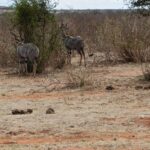
Best Safari Parks and Destinations in Kenya
- Amboseli National Park: Offers classic safari experience and stunning views of Mount Kilimanjaro and is home to the Big 5. Enjoy nature walks, birding, camping, hot air balloon rides, nature photography, game drives, and a cultural tour of Maasai village.
- Samburu National Reserve: A classic safari destination adjacent to Buffalo Springs, and is known for its four of the Big 5 animals (excluding rhinos). Enjoy game drives, hot air balloon safaris, Maasai village visits, walking safaris, nature hikes, bush meals, and horseback safaris.
- Ol Pejeta Conservancy: A private reserve that offers a classic safari experience and is home to the Big 5 as well as a chimpanzee sanctuary. Enjoy lion tracking, night game drive, dog tracking, riding with rhinos, guided bush and bird walks, and visiting the Endangered Species Enclosure.
- Tsavo East National Park: Tsavo East Park provides a classic safari experience with the presence of the Big 5. Explore bird life, wildlife, Aruba Dam, Lugard Falls, Galana and Tsavo River, Yatta Plateau, Mudanda Rock, and Kanderi Swamp.
- Tsavo West National Park: Adjacent to Tsavo East, this park provides a classic safari experience with the presence of the Big 5. But unlike Tsavo East, it has more natural resources, including the famous Mzima Springs. Explore Lunatic Line, Shetani Lava Flows, Roaring Rocks, LUMO Community, and Taita Hills Wildlife Sanctuary.
- Lake Nakuru National Park: A classic safari destination in Kenya known for its black and white rhino populations, Lake Nakuru National Park is family-friendly. Enjoy safaris, out of Africa lookout, pink flamingoes on the lake, and Makalia Falls.
- Aberdare National Park: Aberdare National Park is a classic safari destination in Africa known for the presence of the Big 5 (the biggest herd of black rhinos). Take part in chimpanzee trekking, golfing, safari driving, sundowner, bird watching, and nature walks.
- Nairobi National Park: Nairobi National Park is the only national park in a capital city. Although it lacks the wild vibe, you’ll still have a chance to see the Big 5 and enjoy walking safaris, game drives, birding, and the ivory burning site. While there, take the time to see the orphaned animals at the Nairobi Animal Orphanage.
- Hell’s Gate National Park: This park is characterized by dramatic volcanic rocky outcrops, rock towers, spitting geysers, obsidian caves, water-gouged gorges, and sandstone cliffs—a great choice for hiking, rock climbing, game viewing, picnic, camping, and cycling. Hell’s Gate is home to African buffalo, eland, zebra, Thomson’s gazelle, hartebeest, and Chandler’s mountain reedbuck.
- Meru National Park: Meru and Kora sister parks are home to luxuriant jungles, verdant swamps, coursing rivers, and khaki grasslands. A great place to spot lions, leopards, wild dogs, Somali ostrich, zebra, baisa oryx, giraffes, and over 400 bird species.
Best Safari Parks and Destinations in Tanzania
- Ruaha National Park: Dubbed the best-kept safari secret in Tanzania, Ruaha is home to Big 5 animals (excluding rhinos). Enjoy game drives, bird watching, classic wild safaris, bush walking, cultural visit, boat safari, and more.
- Nyerere National Park (Selous Game Reserve): Nyerere National Park is the largest national park in Africa. It is home to the Big 5 – though its size makes it more unlikely to see elephants, black rhinos, and leopards. But you’ll love the sight of the rare antelope species and endangered African wild dogs.
- Mahale Mountains National Park: Renowned for its fantastic sunset over Lake Tanganyika, Mahale Mountains National Park is home to over 1000 chimpanzees and other primates. While at the park, you can track the primates, bird watch, hike, kayak, or explore Selous Game Reserve or Mount Kilimanjaro.
- Tarangire National Park: This classic safari destination is known for two African Giants: Elephants and great baobab trees. In fact, it’s often referred to as the Baobab Capital of the world because of the large concentration of trees. River Tangarire, which cuts through the park, is a life source for animals and plants. You’ll also find Lons, Leopards, Cheetahs, African wild dogs, etc.
- Katavi National Park: Home to the largest herds of buffalo in the world, Katavi is a relatively untouched wilderness paradise. The park also has numerous elephants, a huge population of lions, cheetahs, hyenas, and painted wolves (wild dogs).
- Lake Manyara National Park: Known for its classic safari, this has a large population of tree-climbing lions, elephants, wildebeest, giraffes, and around 350 bird species.
- Arusha National Park: A small scenic wonderland with various experiences for curious visitors. It has the largest population of giraffes worldwide and is also home to rich savannahs, mountain forests, Tululusia Hill, majestic Mt. Meru, and Ngurdoto Crater. You can also explore Arusha town or indulge in bird watching, canoeing, and walking safari.
- Mikumi National Park: Often called the little Serengeti National Park, Mikumi Park boasts many big games. Top reasons to visit the park include game drives, nature walks, mountains, camping, birding, and cultural visits.
Best Safari Parks and Destinations in South Africa
- Kgalagadi Transfrontier Park: A transfrontier park (shared with Botswana) provides a classic safari experience and is home to all the big cat species. It is one of the large reserve and conservation areas in the world. Depending on your preferences, you can mountain bike, go on an eco-trail, or explore Auchterlonie Museum.
- Madikwe Game Reserve: Located on the border with Botswana near the Kalahari Desert, Madikwe is the 5th largest game reserve in the country. It is regarded as one of the best conservation areas in Africa. It provides a Big 5 experience and other activities like night drives, cultural safaris, birding, game drives, etc.
- Phinda Game Reserve: Phinda is a private reserve that showcases one of SA’s finest gaming experiences, including the Big 5. The park is also home to incredible adventures like game drives, nature walks, community and conservation experiences, sleepouts, etc.
- Hluhluwe-iMfolozi Game Reserve: This classic safari destination is famous for its rhino population and offers sightings of the Big 5. You can also enjoy game drives in your car, guided drives, fishing, picnics, historical sites, etc.
- Shamwari Game Reserve: Shamwari is also a private reserve and provides a classic safari experience with the presence of the Big 5.
- Timbavati Nature Reserve: Timbavati private reserve offers a classic safari experience with the presence of the Big 5. It is famous for its white lions and outstanding leopard sightings.
- Pilanesberg Game Reserve: This classic safari destination is home to the Big 5, providing excellent wildlife viewing opportunities.
- Addo Elephant National Park: As the name suggests, this classic safari destination is primarily known for its elephant population. The Big 5 are present, but elephants are the most regularly seen.
- Augrabies Falls National Park: This park is known for its scenic beauty. It boasts an extensive network of boardwalks that provide fantastic viewpoints over the focal point of the starkly scenic Augrabies Falls. You can also experience mountain biking, augrabies falls, gorge, bush walks and game drive.
- Mountain Zebra National Park: Offering a classic safari experience, this park is known for its Cape mountain zebras, as well as other animals such as cheetahs, lions, black rhinos, and various antelope species.
Best Safari Parks and Destinations in Uganda
- Kidepo Valley National Park: Kidepo Park offers a classic safari experience and is known for its giraffes, cheetahs, various antelope species, and sightings of four of the Big 5 animals (excluding rhinos).
- Murchison Falls National Park: This park offers boat and classic safari experiences and is known for its spectacular waterfall, abundant wildlife, and sightings of four Big Five animals (excluding rhinos).
- Queen Elizabeth National Park: Offering boat and classic safari experiences, this park boasts abundant wildlife and sightings of four Big 5 animals (excluding rhinos). However, giraffes are not present in this park.
Best Safari Parks and Destinations in Botswana
- Chobe National Park: Offering both boat and classic safari experiences, this park is known for its abundant elephants and the presence of the Big 5 (though rhinos are rare).
- Central Kalahari Game Reserve: Known for its classic safari experiences, this reserve’s wildlife is more scarce except after the summer rains. However, all the big cat species can be found here.
- Makgadikgadi Pans National Park: Visitors to this classic safari destination may find wildlife scarce outside the wet season. However, the park is home to the Big 5, although rhino sightings are rare.
- Nxai Pan National Park: Offering a classic safari experience, wildlife is scarce outside the Wet season, but the park is home to the Big 5, although rhinos are rare.
Best Safari Parks and Destinations in Zambia
- Kafue National Park: An oldest and largest national park in Zambia, and is home to 158 mammal species, 500+ bird species, 58 fish species, and 36 amphibian species, including four of the Big 5 animals (excluding rhinos). You can enjoy walking, boat, and classic safari experiences.
Best Safari Parks and Destinations in Zimbabwe
- Hwange National Park: A classic safari destination with a rich abundance of all major safari animals, including the Big 5.
